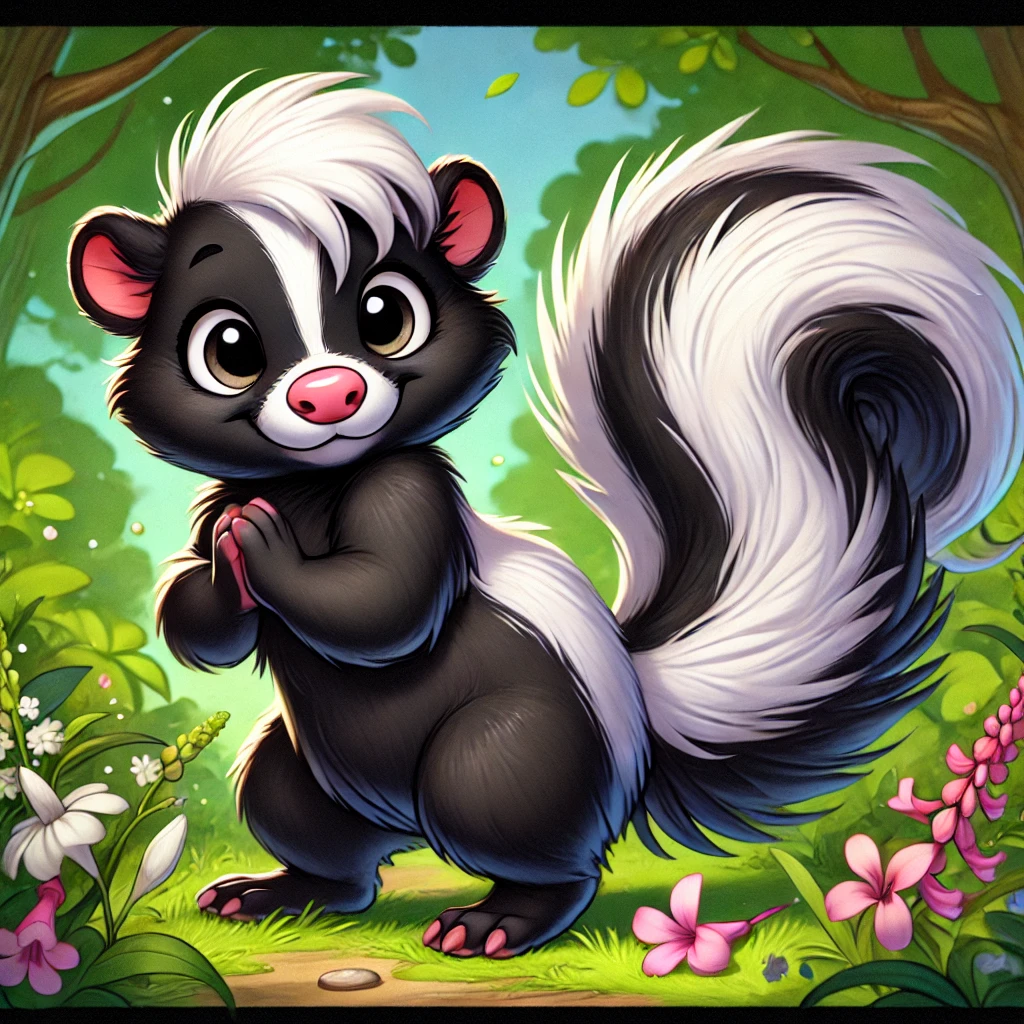Introduction
Pepe Le Pew, the amorous French skunk from Warner Bros.’ Looney Tunes and Merrie Melodies series, has been a fixture in animation since his debut in 1945. Known for his relentless pursuit of love and his distinctive French accent, Pepe’s character has evolved over the decades, reflecting changing societal norms and attitudes. This article delves into the origins, character development, cultural impact, controversies, and the future of Pepe Le Pew, offering an in-depth analysis of this iconic figure.
Origins and Creation

The Birth of Pepe Le Pew
Pepe Le Pew made his first appearance in the 1945 cartoon “Odor-able Kitty,” created by Chuck Jones. Voiced by the legendary Mel Blanc, Pepe was conceived as a parody of romantic stereotypes, blending charm with humor in a way that resonated with audiences. His character was inspired by the French actor Maurice Chevalier, known for his suave demeanor and thick French accent.
Character Design and Development
Designed as a black-and-white striped skunk, Pepe’s appearance was both endearing and humorous. His exaggerated French accent and poetic dialogue added to his charm, making him a memorable character in the Looney Tunes universe. Over time, his character evolved from a minor supporting role to a feature character with his series of shorts, highlighting his popularity among audiences.
Character Traits and Storylines

Personality and Behavior
Pepe is characterized by his amorous yet narcissistic personality. Although he presents himself as a charming individual looking for “l’amour” (love), he is oblivious to his foul scent, which crops up as a running gag in his many appearances. Side characters encountering Pepe would often run away from his smell and/or his skunk-like appearance, adding to the humor of his relentless pursuit of romance.
Recurring Themes
A standard formula in Pepe’s cartoons involves him pursuing a female black cat who accidentally acquires a white stripe, leading him to mistake her for a fellow skunk. His unyielding advances and obliviousness to rejection became the cornerstone of his comedic appeal. These storylines often played on themes of unrequited love and the humorous misunderstandings that ensue.
Cultural Impact and Popularity
Enduring Legacy
Pepe Le Pew became a cultural icon, symbolizing the archetype of the persistent lover. His character appeared in numerous cartoons, comic strips, and merchandise, solidifying his place in popular culture. Despite the changing landscape of animation, Pepe’s influence persisted, and he remained a beloved character for many fans.
Merchandise and Media Appearances
Beyond cartoons, Pepe Le Pew’s image was utilized in various forms of media, including comic books, video games, and even theme park attractions. His distinctive appearance and catchphrases made him a marketable character, appealing to a wide audience. This widespread presence in the media contributed to his enduring popularity over the decades.
Controversies and Modern Reassessment
Criticism and Censorship
In recent years, Pepe Le Pew has faced criticism for his portrayal of persistent romantic advances, leading to discussions about the character’s appropriateness in modern media. Critics argue that his behavior normalizes harassment and perpetuates harmful stereotypes. This has led to the character being removed from certain media projects, including the 2021 film “Space Jam: A New Legacy.”
Public Debate
The debate over Pepe Le Pew’s portrayal in media has sparked broader conversations about the representation of relationships and consent in entertainment. While some defend the character as a harmless comedic figure, others advocate for a reevaluation of his role in light of contemporary understandings of consent and respect. This ongoing discourse reflects the evolving standards of media representation and the impact of cultural shifts on entertainment.
Pepe Le Pew in Contemporary Media
Adaptations and Appearances
Despite the controversies, Pepe Le Pew has made appearances in various media formats, including television shows and films. However, these appearances have been limited, and the character’s portrayal has been adjusted to align with current societal norms. This reflects the entertainment industry’s efforts to balance creative expression with sensitivity to contemporary issues.
Future Prospects
The future of Pepe Le Pew in the media remains uncertain. While some fans continue to celebrate his legacy, others question his relevance in today’s cultural climate. The character’s evolution will likely depend on ongoing discussions about representation, consent, and the role of classic characters in modern storytelling.
Conclusion
Pepe Le Pew’s journey from a beloved cartoon character to a subject of contemporary debate underscores the dynamic nature of cultural perceptions. His legacy highlights the importance of critically engaging with media and the characters that shape our understanding of relationships and societal norms. As discussions about representation and respect continue, characters like Pepe Le Pew serve as touchstones for broader conversations about the values we uphold in entertainment and beyond.